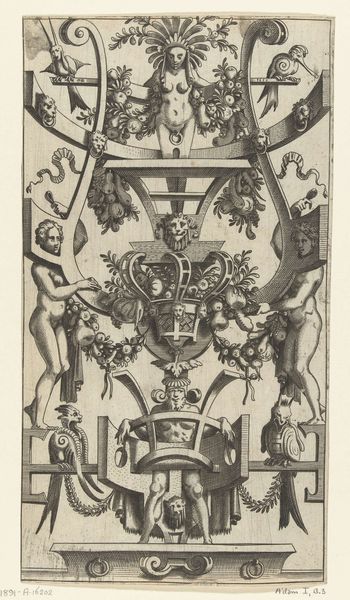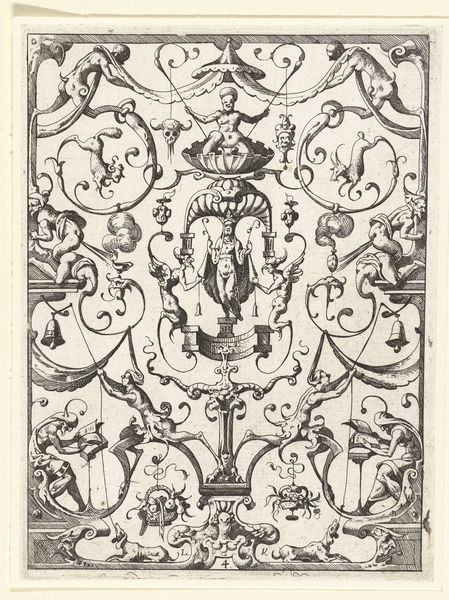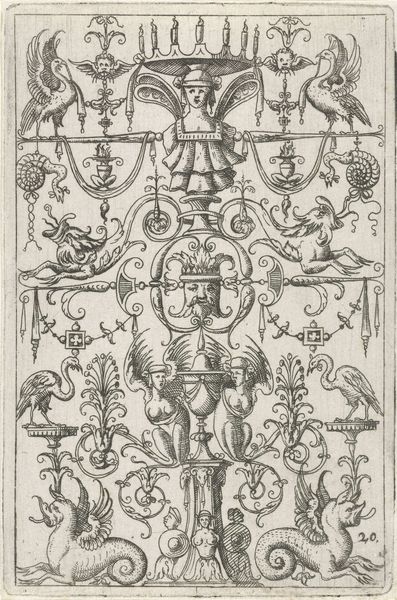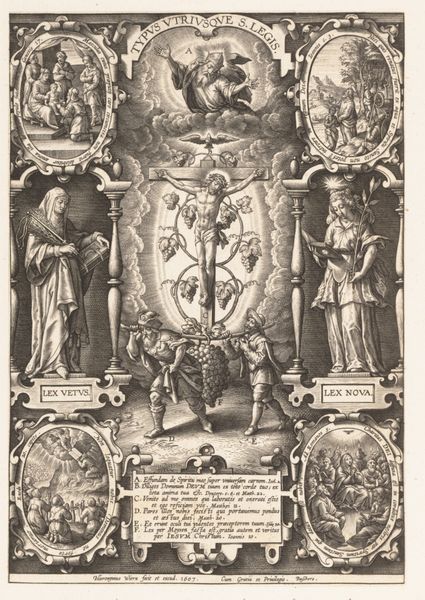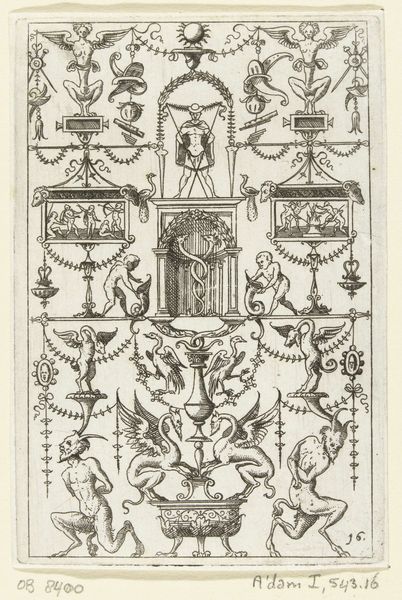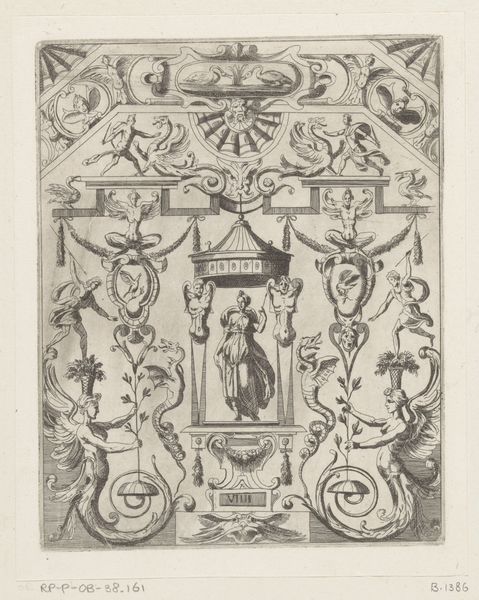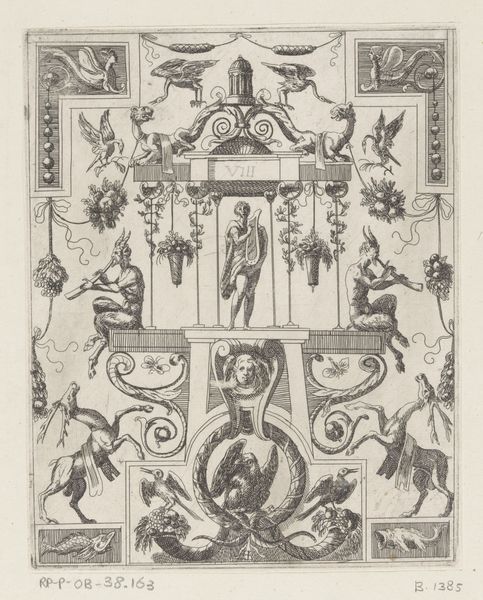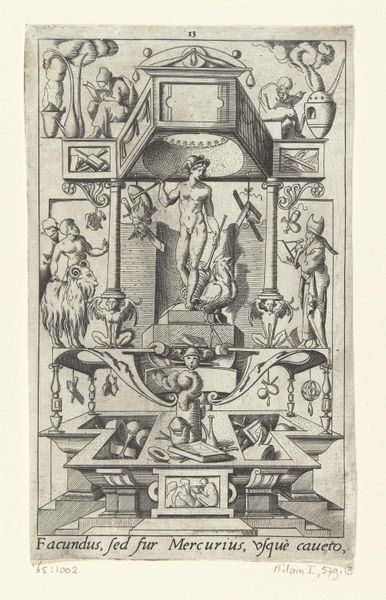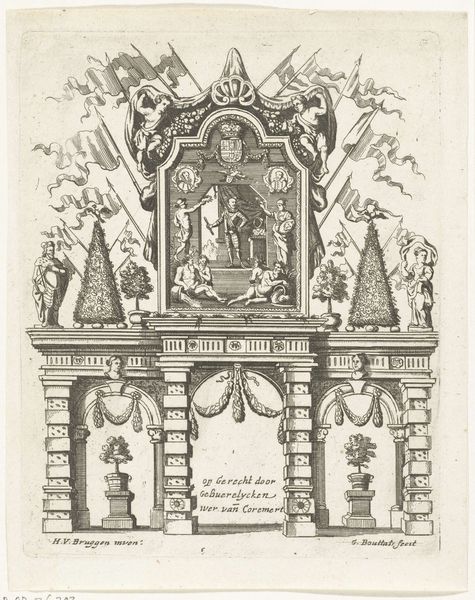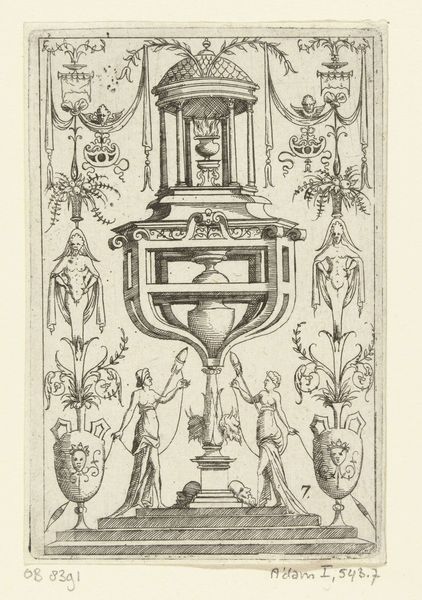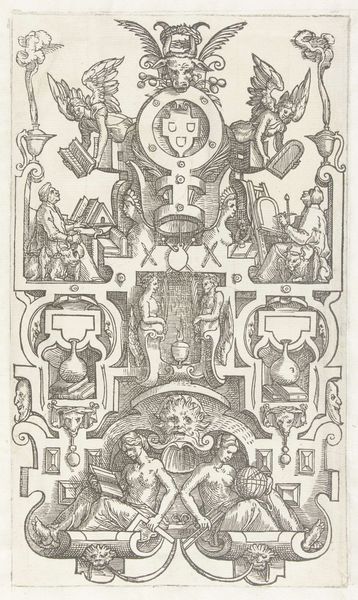
drawing, print, engraving
#
drawing
# print
#
old engraving style
#
figuration
#
11_renaissance
#
line
#
pen work
#
northern-renaissance
#
engraving
Dimensions: height 305 mm, width 207 mm
Copyright: Rijks Museum: Open Domain
Curator: Welcome. Before us is "Vlakdecoratie met figuren," a 1557 engraving by Johannes and Lucas van Doetechum, held in the Rijksmuseum collection. Editor: It strikes me immediately as a rather dense composition, an intricate tapestry of forms and motifs. It is symmetrical, yes, but busy, even chaotic. Curator: The strength of line certainly dictates the overall feel, doesn't it? The cross-hatching builds tremendous depth, organizing the negative space against the positively realized forms of stylized figures and fantastic creatures. Editor: And those figures...serpents coiled around women, satyr-like figures holding lyres. They harken back to classical myths, don’t they? Perhaps commentaries on vice and virtue? There's a rather pagan quality at play. Curator: Undoubtedly. This print employs figuration as a visual device, embedding allegory within an almost architectural framework. The linear nature reinforces this structured element, each form reliant on the other in building an ornamental whole. Note, for example, the parallel and perpendicular axes establishing the underlying composition. Editor: The masks embedded centrally in each band seem like silent observers, and these little oval inset images portraying classical vignettes hint at specific moral tales, don't they? The details here provide rich ground for interpreting cultural beliefs. Curator: The cultural context of the Northern Renaissance absolutely permeates every level of visual organization, even down to how the individual elements are treated in the picture plane, embedded within the complex line work, with the goal of creating an interwoven tapestry that supports the internal structure of the art. Editor: Looking again at the base, the motif of embracing figures suggests fertility and abundance. Juxtapose that with the bestial lyre players, and you have an immediate and rather bawdy juxtaposition, really, between the sacred and the profane. Curator: Absolutely. So within these constructed symmetries and visual frameworks lies a more subtle dynamism – an active commentary on the nature of mankind through carefully embedded forms and expertly realized graphic style. Editor: Ultimately, this densely wrought print shows us a snapshot of an era grappling with its classical heritage, interpreted through a distinct artistic language. Curator: Yes, and a magnificent example of compositional unity.
Comments
No comments
Be the first to comment and join the conversation on the ultimate creative platform.
